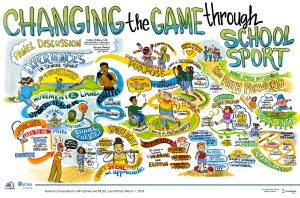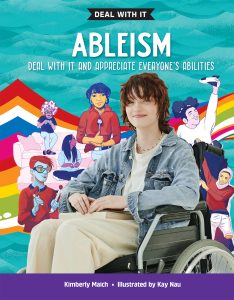1. Physical and Logistical Barriers
These are the practical problems that make it hard or impossible for someone to join a sport. For example, a swimming pool might not have a ramp or hoist to help someone in a wheelchair get into the water. A sports club might be far away, and public transport might not be accessible. If someone needs help using equipment, but there’s no trained staff, they can’t join in. These are barriers caused by poor planning, not the person’s disability. Imagine a teenager who wants to join a soccer team but uses a walker to move around. The soccer field is only accessible by stairs, and the nearest accessible bus stop is two miles away. Even if they have the skill and interest, they can’t participate because of these physical and travel barriers.
2. Psychological and Emotional Barriers
Disabled people might feel nervous or embarrassed about joining a group where they stand out. They may worry that they won’t be accepted or that people will judge them for being different. These feelings often come from past experiences where they were excluded or treated differently. A student with a learning disability might avoid PE class because they’ve been teased before or made to do completely different activities than their classmates. Even if they want to take part, the fear of standing out makes them stay away.
3. Attitudinal Barriers
Sometimes the biggest problem isn’t a ramp or a bus—it’s the way people think. Coaches or teachers might assume disabled people can’t keep up or shouldn’t be in the same class. Even other athletes might not be welcoming, especially if they don’t understand what disability really means. These attitudes can make people feel unwelcome or like they don’t belong. For instance, a visually impaired runner wants to train at a local track, but the coach assumes it’s “too risky” and refuses to allow them to join. Instead of finding ways to support the runner, the coach shuts the door on their opportunity.
4. Separate vs. Integrated Sports
Fitzgerald and Long talk about two main ways disabled people are included in sport: separate provision (special teams or programs just for disabled people) and integrated provision (joining mainstream teams and programs with everyone else). Both approaches have pros and cons. Separate sports can feel safe and supportive, especially for people who want to be with others who understand their experiences. But it can also make disabled people feel like outsiders or second-class athletes. For example, a wheelchair basketball team gives players the chance to compete at a high level, but some people see it as “less serious” than regular basketball. That attitude can make it harder for players to get recognition or funding. Integrated sports let disabled and non-disabled people play together, but this only works if the sport is designed to include everyone equally. Otherwise, disabled players may feel like they don’t belong. For example, deaf athlete joins a mainstream volleyball team, but no one learns basic sign language or adapts the drills. The player feels left out because communication is a constant struggle.
5. Invisibility and Misrepresentation
Disabled people are often not seen in sports—especially in media or leadership roles. When they are shown, it’s sometimes in a way that focuses only on their disability, not their skill. This lack of positive representation can discourage others from even trying. For instance outside of the Paralympics, you rarely see disabled athletes on TV. When they are shown, the story is often about how they “overcame” disability, instead of focusing on their training, talent, and success.
6. Intersectionality: Disability and Other Identities
Fitzgerald and Long also explain that disability doesn’t exist alone, it’s part of someone’s whole identity. A disabled person might also face racism, sexism, or poverty, which can make it even harder to join in. For example, a young Black girl who is also autistic may face challenges in a sports setting that go beyond just her disability. Coaches may overlook her talent because of stereotypes about race, gender, and ability all at once.
I believe there isn’t just one right way to include disabled people in sport. In some cases, separate programs can provide the comfort and support that’s needed, while in other situations, being part of mainstream teams can work better. What matters most to me is true inclusion—making sure disabled individuals have real choices and feel respected and welcomed wherever they choose to participate. That means we need to rethink how we design sports, how we train coaches, how we build our facilities, and especially how we view disability. I don’t think disabled people should have to change who they are to fit into sport—instead, sport should change to fit and include everyone equally.
I believe sport should be grouped by ability instead of disability because this focuses on what people can do, not what they can’t do. Grouping by ability means athletes are matched based on their skill level, which makes the competition fair and more enjoyable for everyone. Just because two people have the same disability doesn’t mean they have the same skills or experience. For example, one wheelchair user might be an expert in their sport, while another is just starting out so putting them in the same group just because of their disability wouldn’t be fair.
This idea also connects to the social model of disability, which says people are often held back more by society’s barriers than by their disability. Grouping by disability follows the medical model, which focuses on a person’s limitations. That can make people feel excluded or judged. But if we focus on ability, it gives everyone a better chance to participate and be valued for their strengths. It also helps break down unfair stereotypes about what disabled people can or can’t do.
In some cases, grouping by disability might still make sense, like in the Paralympics, where fair classifications are important. But overall, using ability as the main way to organize sports is more fair and inclusive. It allows people of all backgrounds and abilities to play, compete, and grow together.


